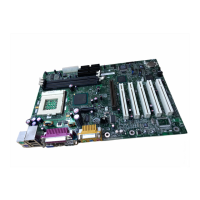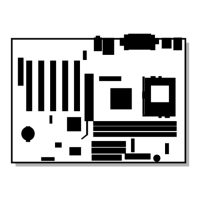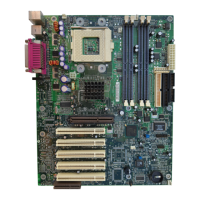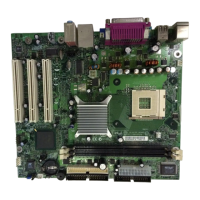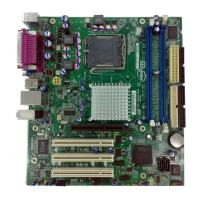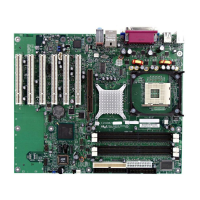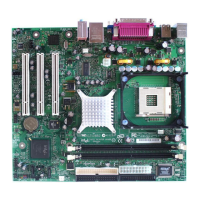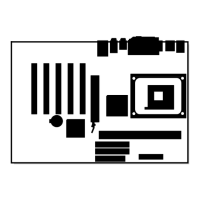Intel Desktop Board D815EEA2/D815EPEA2 Technical Product Specification
52
1.15.2 Hardware Support
CAUTION
If the Wake on LAN and Instantly Available technology features are used, ensure that the power
supply provides adequate +5 V standby current. Failure to do so can damage the power supply.
The total amount of standby current required depends on the wake devices supported and
manufacturing options. Refer to Section 2.11.3 on page 94 for additional information.
The boards provides several hardware features that support power management, including:
• Power connector
• Fan connectors
• Wake on LAN technology connector (optional)
• Instantly Available technology
• Resume on Ring
• Wake from USB
• Wake from PS/2 keyboard
• PME# wakeup support
Wake on LAN technology and Instantly Available technology require power from the +5 V standby
line. The sections discussing these features describe the incremental standby power requirements
for each.
Resume on Ring enables telephony devices to access the computer when it is in a power-managed
state. The method used depends on the type of telephony device (external or internal) and the
power management mode being used (APM or ACPI).
✏
NOTE
The use of Resume on Ring and Wake from USB technologies from an ACPI state requires an
operating system that provides full ACPI support.
1.15.2.1 Power Connector
When used with an ATX-compliant power supply that supports remote power on/off, the
D815EEA2 and D815EPEA2 boards can turn off the system power through software control. To
enable soft-off control in software, advanced power management must be enabled in the BIOS
Setup program and in the operating system. When the system BIOS receives the correct APM
command from the operating system, the BIOS turns off power to the computer.
With soft-off enabled, if power to the computer is interrupted by a power outage or a disconnected
power cord, when power resumes, the computer returns to the power state it was in before power
was interrupted (on or off). The computer’s response can be set using the After Power Failure
feature in the BIOS Setup program’s Power menu.
For information about Refer to
The location of the power connector Figure 14, page 69
The signal names of the power connector Table 34, page 71
The BIOS Setup program’s Power menu Section 4.6, page 127
The ATX specification Table 3, page 19
